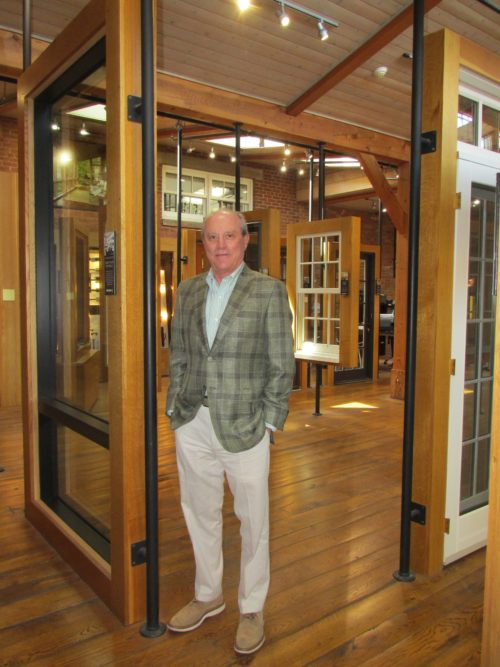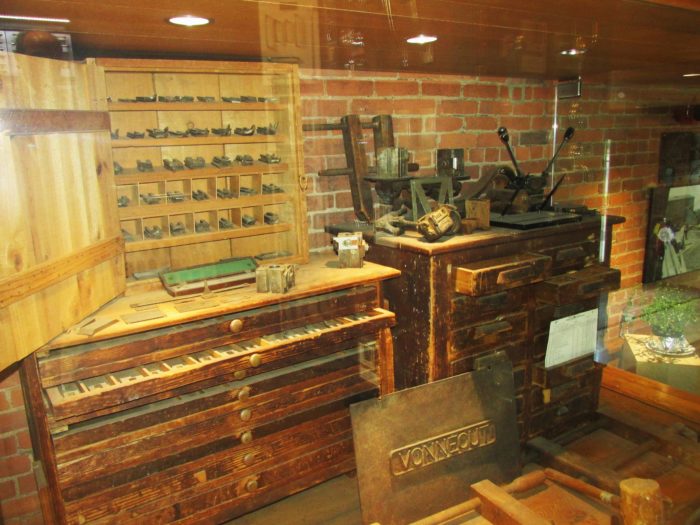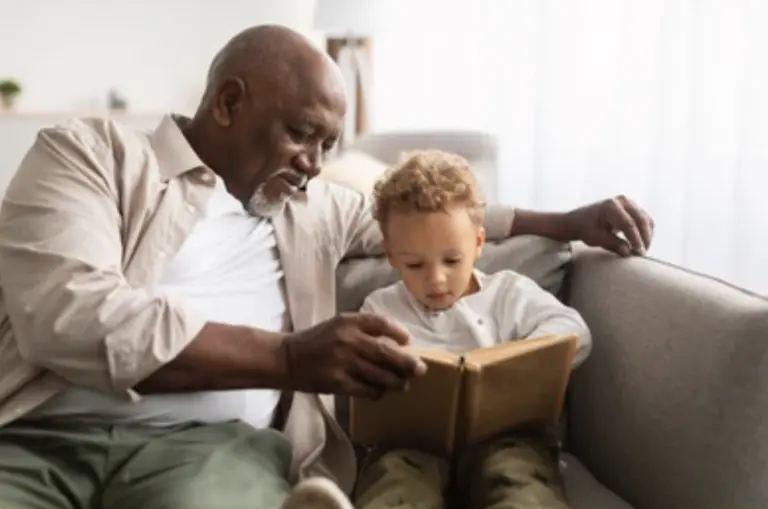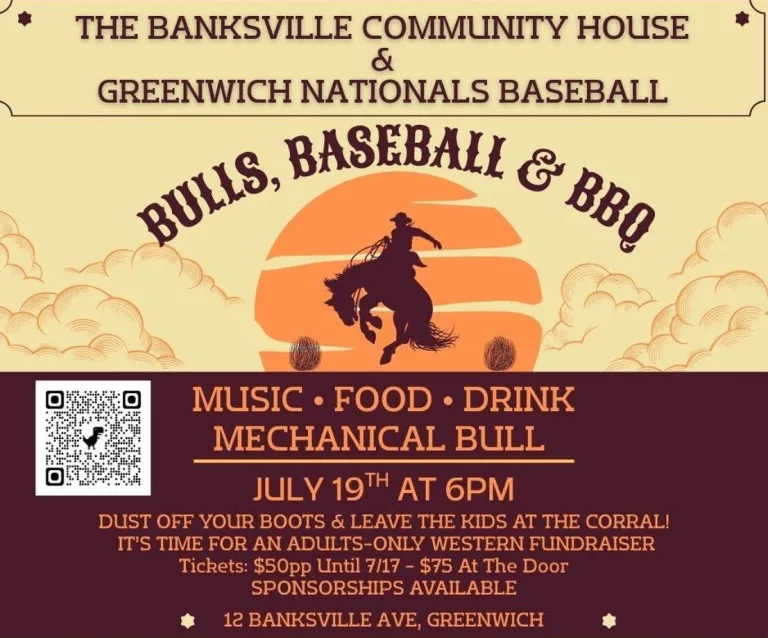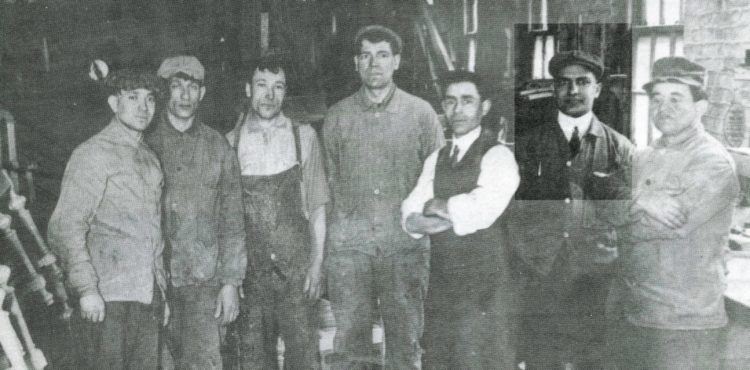
Celebrating a century and more of Greenwich’s Interstate – Lakeland lumber company Part I – The first 50 years
By Anne W. Semmes
Sheldon “Shelly” Kahan, sitting in his office on South Water Street in Byram, has a story to tell about his grandfather, Leon Kahan who emigrated from Romania in 1906, age 16, to join his mother in Brooklyn. “He was a woodcarver… He gets a job in a chair factory carving the arms and legs of the chairs.” And then young Leon and “a bunch of guys’ who worked alongside him bought that chair factory in 1918. “And they ran that for a while, and then in 1922 my grandfather and two of those guys came right here to Byram and they bought this property. And they started the Interstate Lumber & Millwork Corporation.”
And now, 101 years later, grandson Shelly Kahan as President and CEO runs that Interstate Lumber company now combined with the Lakeland Lumber company bought by his grandfather to be called Interstate + Lakeland Lumber. And outside Kahan’s office there are piles and piles of lumber being loaded onto trucks. But in those early years of the 1920’s and 1930’s that lumber was arriving by barge up the Byram River.
By 1938 that arriving lumber was making the news. “Crew of 25 Unloads Shipment for Interstate Mill; Kahan, Company President, Visions Great Activity During Coming Year.” That shipment would count 250,000 feet of lumber, “but Mr. Kahan ordered an extra 100,000 feet,” the article stated, “on his belief of a building boom.” Indeed, by the late 1930’s and early 1940’s Interstate would be selling four million feet of lumber a year.
By then barge delivery would be replaced by rail delivery, tells Shelly Kahan. “There was a rail yard by the Lifesavers [now condo] building, and that’s where we used to get our lumber, and then we’d parade all the trucks through Port Chester.”
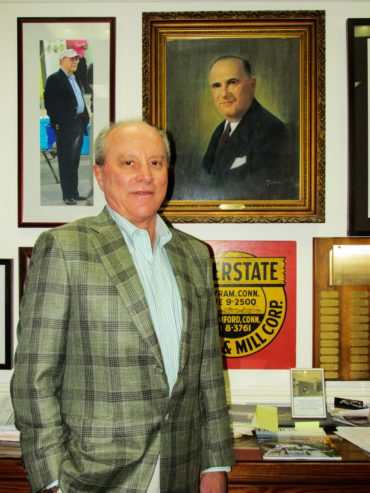
That lumber was coming from the West Coast he tells. “Back then it was Northern California, the State of Washington, Oregon, Western Canada. Mother nature’s really good there for growing Douglas Fir trees. In this area we work with a lot of Douglas Fir.”
So, how was all that lumber being used? “It’s building material for a house,” says Kahan. “You have to frame the house. You put windows in a house. My grandfather had a woodworking shop. They made windows, they made stairs. They made doors.” He shows framed on his office wall invoices from 1938. “See here, he would sell a door that’s 2’6″ wide, 6’6″ tall for $5 a piece…When you’re the neighborhood lumberyard – don’t forget we started before there was Home Depot and Lowes – he’d help the homeowners, mom and pop, to the area’s home builders and developers.”
“Every lumber yard,” he continues, “has a personality regardless of where it is. So being that it all started when my grandfather was a woodworker, I think Interstate Lumber’s DNA or personality is custom architectural millwork. But he died in 1968 when I was 12. So, I wasn’t mature enough to talk to him about what it all meant, but spending my whole life here part of our DNA is millwork. We always had woodworkers in his shop.”
Today that Byram shop has been transformed into the Greenwich Design Center showcasing all that woodwork: windows, doors, and floors. But also preserved behind glass are Leon Kahan’s woodworking tools, including, “That’s his pen and pencil set. These are the real McCoy’s. So, in this left cabinet we used to have a Vonnegut molding machine, and these are all the knives. These are the drawers that the knives were kept in that they would grind to make the molding…And over there is a belt. All the machinery used to be belt driven.”
Also preserved from the 1930’s Kahan shows the door of a wooden locker. “The guys who worked in the shop would make these. They’d come to work in their street clothes and hang their street clothes up and put on their work clothes for the day. And when the day was over, they’d take off their work clothes, put them in the locker, and put on their street clothes.” He then points to a faded illustration on the door. “It’s the remnants of the old-school pinup. So, when I was a kid, my father would have me go sweep the floor in the shop, and the men would have the old Betty Grable-type Playboy pinups…It’s part of my little history growing up. That was the first time I saw a pinup.”
It’s time to return to Kahan’s office where he reveals that all the furniture in his office was made from timber taken down during the transformation of his grandfather’s workshop into the Design Center. And all the walls here are filled with varieties of history of the impressive growth of the Interstate + Lakeland enterprise.
So, eyeing all that history what did Kahan think was his grandfather’s biggest challenge to build his lumber/millwork business?
“The Depression,” he shares. “We had the Great Depression in 1939. I was told that one of his challenges was the extension of credit to people. We’re going back some time where he would shake people’s hands, give them credit, and sometimes the builder couldn’t pay him. But he always said, ‘Give me $5 a week or give me something.’ So, he went to the bank in Port Chester to borrow some money. And he brought his receivables because he was owed money by his customers. So, the banker asked him, “Do you have your receivables?” So, he took his receivables out of his jacket pocket and handed them to the banker. The banker looked at the names and numbers and said, ‘Mr. Kahan, you don’t need my money. You just need to collect your receivables.’”
Next week, Part II with the story of the next 50 years of the Interstate + Lakeland Lumber company.
